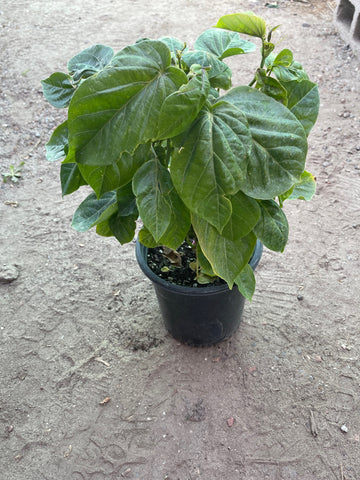Full sun; moderate water. A vigorous vine that is woody at the base and climbs onto structures or high into trees using tendrils with heart-shaped 4-8 inch long leaves that are of a medium green color and paler below with prominent veins. In the warmer months of the year appear the 4 inch wide sweetly fragrant flowers, often in pairs at the leaf base. These flowers have greenish white sepals and light pinkish-white petals with 2 ranks of filaments that are banded with bluish purple. These are followed by 2-3 inch long rounded yellow-orange fruit with light purple markings with a hard outer shell surrounding the gelatinous clear pulp that contains the seeds. This sweet pulp is the edible part and contains vitamins A, C, and K, phosphorus, iron, and calcium. This plant is native to northern Argentina through the Andes Mountains between Bolivia and Venezuela and as far north as Mexico. It is cultivated worldwide in mild moist tropical mountainous regions. Orange-yellow colored passion fruit, having some of the better tasting pulp of the passion fruits. Fruits are eaten raw, or processed for juices, desserts, and flavorings.

